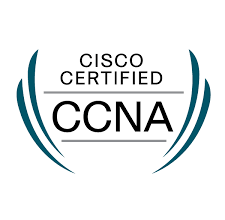Innovative Strategies for Student-Centered Learning Environment

In the present educational realm, creating an environment that revolves around student needs is crucial for developing the next generation of thinkers and solvers. The shift from traditional teaching methods to innovative strategies is indispensable in preparing students for the intricacies of a fast-changing and interconnected world. This piece delves into avant-garde approaches to student-centered learning that transcend conventional norms, ensuring a dynamic and enriching educational journey for learners.
Growth Mindset: Continuous Assessment and Feedback
Departing from the exam-centric evaluation, continuous assessment and feedback are gaining prominence. Regular assessments offer insights into individual progress, allowing educators to tailor their support. Timely and constructive feedback, facilitated by efficient administration software, fosters a growth mindset, encouraging students to view mistakes as opportunities for learning and improvement. This method enables students to assume control of their learning journey, fostering resilience when confronted with challenge.
Tailoring Education: Personalized Learning Paths
A fundamental aspect of cultivating a student-centered environment involves embracing personalized learning paths. Unlike the conventional norm of uniform approaches in traditional classrooms, educators are increasingly harnessing the power of technology and data analytics. The integration of sophisticatedapplications, such as record keeping software, fee management system, andautomated assessments software, can streamline most of the processes. Using technology enables them to tailor educational content to align with individual strengths, weaknesses, and learning preferences. This deliberate customization goes beyond merely enhancing student engagement; it also delves into the profound deepening of their comprehension in various subjects.
Spaces for Collaboration: Fostering Teamwork and Communication
Transitioning from conventional desk-and-chair arrangements, modern learning environments are strategically crafted to encourage collaboration. Whether in physical or virtual collaborative spaces, students encounter numerous chances to participate in group projects, discussions, and problem-solving endeavors. These spaces serve as incubators for fostering essential skills such as teamwork, effective communication, and the capability to navigate diverse perspectives—a skill set that proves invaluable not only in academic settings but also in the broader landscape of professional success. The emphasis on versatile learning environments is integral to preparing students comprehensively for challenges and opportunities in various spheres.
Application-focused Learning: Project-Based Approaches
Prioritizing application over rote memorization, project-based learning immerses students in real-world challenges. By engaging in practical projects, students acquire not only knowledge specific to the subject but also cultivate essential skills such as critical thinking, problem-solving, and project management. This methodology effectively connects theoretical concepts with hands-on application, preparing students to meet the challenges of a rapidly evolving professional environment.
Rethinking the Learning Process: Flipped Classroom Model
The conventional lecture-homework model is undergoing a significant transformation. In the flipped classroom model, students engage with instructional content outside class time, utilizing videos or online resources. Class time is then dedicated to interactive discussions, collaborative activities, and problem-solving. This inversion maximizes face-to-face interaction, allowing educators to offer tailored support that meets individual student needs effectively, creating a more personalized and engaging learning environment.
Engaging Learning: Gamification in Education
Gamification applies game design principles to make learning a more enjoyable and immersive experience. By incorporating rewards, challenges, and competitions, educators can boost student motivation and engagement. Interactive educational games and simulations not only reinforce academic concepts but also instill a sense of achievement, motivating students to actively participate in their educational journey.
In conclusion, the adoption of innovative strategies in cultivating a student-centered learning environment holds paramount importance in readying students for the intricacies of the 21st century. Through the personalized tailoring of learning paths, the encouragement of collaboration, the emphasis on real-world application, the implementation of the flipped classroom model, the integration of gamification, and the prioritization of continuous assessment, educators can craft a vibrant and dynamic educational experience. This comprehensive approach equips students with a diverse skill set, preparing them not only for academic success but also for navigating and thriving in the ever-evolving challenges of the contemporary world.



